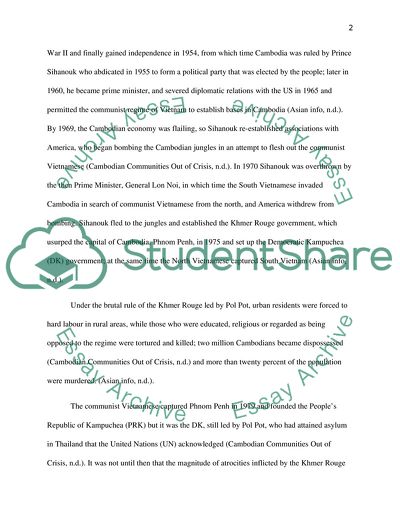Cite this document
(Cambodia Essay Example | Topics and Well Written Essays - 2000 words, n.d.)
Cambodia Essay Example | Topics and Well Written Essays - 2000 words. https://studentshare.org/miscellaneous/1738574-cambodia
Cambodia Essay Example | Topics and Well Written Essays - 2000 words. https://studentshare.org/miscellaneous/1738574-cambodia
(Cambodia Essay Example | Topics and Well Written Essays - 2000 Words)
Cambodia Essay Example | Topics and Well Written Essays - 2000 Words. https://studentshare.org/miscellaneous/1738574-cambodia.
Cambodia Essay Example | Topics and Well Written Essays - 2000 Words. https://studentshare.org/miscellaneous/1738574-cambodia.
“Cambodia Essay Example | Topics and Well Written Essays - 2000 Words”. https://studentshare.org/miscellaneous/1738574-cambodia.


